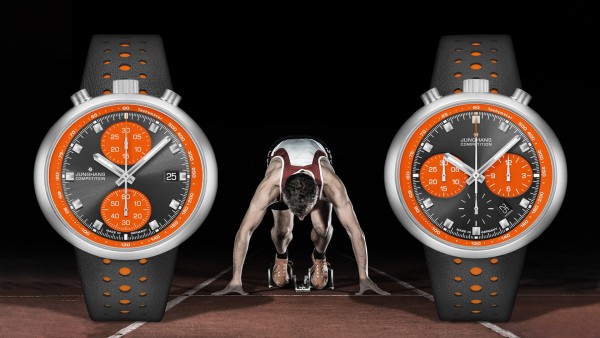In competitive sports, the fraction of a second can be the difference between winning and losing. Today, modern technology ensures that performances are measured objectively – and with it, fairness in the fight for medals and podiums. But that hasn’t always been the case, and is rather the result of decades of developmental work: Knowing that solely precise time keeping would bring fairness to sports, Junghans has been working on creating more accurate timing instruments for competition since the early 20th century. Starting with the production of hand-held stop watches in the 1920s, the development of quartz technology in the 1960s enabled a quantum leap on the path to absolute precision. In the following years, Junghans utilized the technology in numerous different major sporting events and set a new benchmark in time keeping. With the introduction of the electronic start control, “chronometry” by Junghans reached its peak in 1972 in Munich – and thus, the company its long-standing goal of objectivity in measuring performances. To celebrate this milestone, Junghans released a series of sportive wrist watches, with its most prominent model quickly becoming a much sought-after collector’s item – which it has remained to this day. Now, exactly 50 years later, with the limited 1972 competition models the entire fascination with sports and time is more present than ever.
Dynamic in Geometry and Colour
With their ellipsoidal case as well as the pushers and crown mounted at the top – reminiscent of a hand-held stop watch – both variants refer directly to the distinctive design of their legendary archetype. Inspired by a traditional timekeeper’s table clock, the subtly slanted case aligns itself to meet the eye of its beholder, ensuring easy handling of the exposed pushers. The exciting geometric shape also puts its stamp on the dial design of both models: The minute graduation runs classically circular around the anthracite sunburst dial, while the orange totalisers and dial ring with tachymeter scale adopt the oval-shaped case.
Whilst their design embodies the charm of the 1970s, the sapphire crystal with anti-reflection coating on both sides, the screw-down crown and a water resistance up to 10 bar ensure sportiness in the present. The perforated leather straps seamlessly merge into the ergonomically curved case back, and are doubly bolted to ensure a robust link. Case and strap form a resilient unit, providing a high comfort in wear.
The limited special models 1972 Competition and 1972 Competition Edition embody the century-long chase after the best possible time – by both athletes and timekeeper Junghans. And thus, they stand for fairness in competitive sports.





